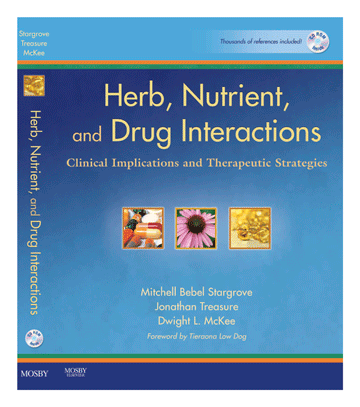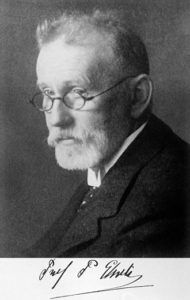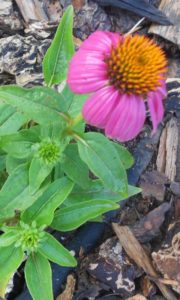Herbs do not work in the body the way that you think they do.
Beyond St. John’s Wort and grapefruit juice, the interactions of herbs with drugs are unpredictable and usually minimal.
This is the bottom line of what I heard from Jonathan Treasure this past weekend at the Southwest Botanical Conference.
 He should know because he is the co-author of “Herb, Drug and Nutrient Interactions” published nearly 20 years ago. He said:
He should know because he is the co-author of “Herb, Drug and Nutrient Interactions” published nearly 20 years ago. He said:
Herbs don’t work in the body; the body works on herbs.
Warning: I am simplifying a very technical presentation to a few concepts that I intend will change the way you think about herbal medicine.
It will change the way you look at research, especially when it is quoted in articles you commonly come across on the internet. And I hope it will simplify things in the long run.
What does this mean for you, the person taking herbs?
 Herbs can be powerful plant companions in healing, and there is no reason for most people to shy away from them in restoring health. There is a rich human heritage of using plants for healing. We can access many traditional medicinal uses for consideration of use in our own health.
Herbs can be powerful plant companions in healing, and there is no reason for most people to shy away from them in restoring health. There is a rich human heritage of using plants for healing. We can access many traditional medicinal uses for consideration of use in our own health.
But the “scientific” mechanisms of action that are listed in scholarly compilations are based on studies in labs that are rarely relevant to the use of herbs in a human body. This is a huge source of error in analyzing natural compounds, what they will do for us and what danger they pose in relation the concomitant use of drugs.
To put this in perspective, of the 10’s of millions of natural compounds, 200,000 are listed in the Natural Products Alert database to have activity associated with them, he said. That works out to 2 percent.
Why are we looking for bioactivity of herbs?
 It all can be traced back to the late 1800’s and early 1900 when Nobel Laureate Paul Ehrlich proposed a theory and started looking for chemical agents that had selective toxicity on bacteria and other cells.
It all can be traced back to the late 1800’s and early 1900 when Nobel Laureate Paul Ehrlich proposed a theory and started looking for chemical agents that had selective toxicity on bacteria and other cells.
He had the theory that started modern day pharmaceutical research.
He believed that there could be a single substance that would target a specific disease-causing agent, such as the syphillis bacteria. He coined the term “silver bullet” to refer to the substance that could selectively target that way. Ever since, most research has been focused this way.
Jonathan Treasure states that it is very rare for this to happen.
He stated that multiple lines of evidence suggest that the vast majority of natural products are devoid of the Ehrlichian Silver Bullet. And that the absence of this bioactivity is an important finding.
What about all the research?
There is the Natural Standards Database which tells us it is:
The most authoritative resource available on dietary supplements, natural medicines, and complementary alternative and integrative therapies.
As it was compiled by people with a doctor of Pharmacology degree, they specifically come from a anti-vitalist background. Their study can generate data but it has real problems when you actually bring it into the realm of prescribing in the clinic.
How many places in research or on the internet is this quoted?
Jonathan Treasure writes about the problems with the database. It is compiled based on fallacies such as:
The general form of the fallacy is (where A is a clinical or physiological parameter):
• Herb X affects A
• Drug Y affects A
• Therefore combining Herb X with Drug Y implies an (adverse) herbdrug interaction involving A.There are literally hundreds of these unconfirmed “fantasy interactions” listed in databases usually compiled in abbreviated format by pharmacists for physicians and available on electronic hand-held devices or in print and web based resources.
Another relevant point he makes is that
Herbs are not drugs, their influence is more subtle and physiological than pharmacological, involving time-dependent shifts in multiple metabolic and signalling pathways that are distinctly different from the actions of most pharmaceuticals. This is of course part of their strength, not a weakness. Molecular multitasking” is characteristic of natural compounds, whether herbs or dietary ingredients; for example, curcumin, derived from the spice turmeric, influences over a hundred known molecular targets in the biological pathways of cancer tumorigenesis, proliferation and metastasis.
Another of the issues Treasure points to is that you must take a plant and fractionate the herbal compound to study it.
There is one supplier of natural compounds for all of research. The compounds that they produce are 95% pure. He said that you have no idea what the other stuff is in it. That is significant and complicates things. And studying natural compounds that are 5% something else is what has given us the research in the Natural Standards Database. This issue was investigated in the publication of the article Can Invalid Actives Undermine Natural Product-Based Drug Discovery?
Why is there no “silver bullet”?
 There is an enzyme system found in the liver and gut that metabolizes more than half of pharmaceutical drugs.
There is an enzyme system found in the liver and gut that metabolizes more than half of pharmaceutical drugs.
Where did it come from?
It evolved to deal with natural products that we eat every day. These natural products are in our foods, and must be broken down to be eliminated. This particular enzyme will handle a wide variety of natural products. It is not specific to specific molecules. This blows the Silver Bullet theory right there.
In addition, this enzyme system is prone to genetic variation. We know that people can be typed as slow and fast metabolizers.
However, the genetic differences does not explain the amount of variations seen in metabolilzers.
Treasure says we have to look somewhere else.
Then how do herbs have an effect on our body?
 Echinacea is known as an effective immune system herb. However, Echinacea can be pro-inflammatory, he said. Oddly, it can be pro-inflammatory at different times in the same person. How can that be?
Echinacea is known as an effective immune system herb. However, Echinacea can be pro-inflammatory, he said. Oddly, it can be pro-inflammatory at different times in the same person. How can that be?
We start by looking at messenger RNA. This is the part of our genetic code that takes the information from our DNA and makes a protein out of it. The protein made plays a specific function in our body.
Recent findings is that there is another RNA, called micro RNA, that affects the messenger RNA when they are making that protein. The micro RNA, miRNA for short, will modulate the messenger RNA, or mRNA. The miRNA will either bind the mRNA or destroy it. That will temporarily repress the production of the protein by the mRNA.
This mechanism of miRNA was investigated in the paper “The Effects of microRNA . . .” This is a cutting edge of research.
What is relevant for you and I is that we get miRNA when we eat foods, in this case specifically plants. This microRNA is transported intact between the plant and us, humans. When the microRNA enter our systems, it has a regulatory action on our own messangerRNA.
Micro RNA is the primary means of interactive communication between plants and humans.
Let me repeat this most important point.
Micro RNA is the primary means of interactive communication between plants and humans. They modulate the expression of proteins for enzymes and affect metabolizing pathways that way.
Not the organic compounds in the plant, not the much-studied fractionated compounds from plants which are purported to act like drugs in our body.
As an aside, can you see that since microRNA is transported intact between the plant and us, that genetically modified plants such as corn and soy have a huge potential to disrupt the way we function?
What we don’t know
By actually doing science, as evidenced by the microRNA research, Treasure says, we can find out that there is nothing we can do to predict the effect it will have on a person. All the studies of plant pharmacology and herb interactions is a complete waste of time! We are looking at the wrong thing. The molecular biology mechanisms of action are trivial clinically.
What we do know is that St. John’s Wort and grapefruit juice are issues with certain drugs.
We do know that micro RNA are important in food and herbs effect on our body.
What we don’t know is what will happen clinically. Therefore, natural doctors must use their education in the traditional uses plus clinical experience and observe what happens in the individual patient.
Stop being fooled by all the “research”
Nature and the human organism are much more complex than reductionist “science” can get a handle on.
In the first place, many of the ideas behind research are based on false assumptions, such as the reverse-extrapolation fallacy already quoted. An example of this is in believing that it is dangerous to combine calming herbs with sedative drugs, or herbs that will mildly help to normalize glucose with hypoglycemic drugs. Treasure writes that sometimes
the extrapolations are even more tenuous, made on the basis of the basis of “coumarin containing herb” interacting adversely with warfarin anticoagulation. Invariably there are no case reports demonstrating these “theoretical interactions”, and often in vivo evidence exists that actually disproves the hypothetical extrapolations.
In addition, it is easy to get further off-track with failing to consider routes of administration, using animals for testing then extrapolating to humans, and dosage levels in a lab experiment in contrast to in real-life prescribing.
In fact, potential herb-drug interacting pairs may actually be helpful to use together in the increased likelihood that the patient will use them due to lower costs and reduced side effects, thereby increasing quality of life.
It is cutting edge investigative research which is showing what the mode of action of plants is, and it is not a “mechanism of action.” Nature cannot be modeled as a machine. This makes the difference in these two statements.
Herbs do not work on the body. Herbs do not fit in certain mechanisms to have a certain effect.
The body works on herbs. It works in the environment it is given: with food, including plants, air, water, social interactions, and many intangible other factors. Herbs ingested communicate with the body by way of the microRNA.
I hope it is a communication that supports and sustains life.
WANT TO USE THIS ARTICLE IN YOUR NEWSLETTER OR WEB SITE?
You can, as long as you include this complete blurb with it: “Naturopathic Physician Dr. Cheryl Kasdorf is a doctor who listens and has answers with a natural approach that works. She is known as the go-to person to get back your get-up-and-go when it is gone, gone, gone. Get your FREE gift “Dr. Kasdorf’s Health Secrets for Feeling & Looking Great” at drcherylkasdorf.com





